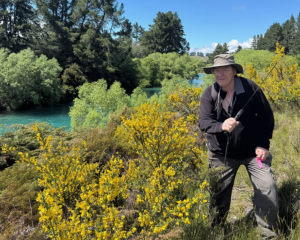The notorious Cascade Saddle route in Mt Aspiring National Park will be examined today in the hope it can be made safer for trampers and climbers.
A team from the Department of Conservation, including leading mountain safety expert Don Bogie, of Christchurch, is flying to the saddle which has claimed as many as 10 lives over several decades.
The review follows Otago-Southland coroner David Crerar's comments last year there had been ''far too many deaths'' on the route.
He was inquiring into the death of German tourist Frank Spychalski (38), who slipped and fell several hundred metres near the top of the saddle in November 2012.
Since then, Doc has upgraded signs along the route but today's visit is designed to explore further safety options.
Mr Bogie told the Otago Daily Times one option was to re-open the nearby ''Smith route'', which was longer but not so steep.
It appeared to have fewer dangers for those who fell.
Other options included erecting safety barriers on parts of the existing route.
Mr Bogie said the most dangerous stretch was the few metres at the top of the saddle where the route across snow or slippery snow tussock rose to a 45 degree angle.
''Steep snow grass, particularly short snow grass ... is quite lethal when it's wet.''
Doc's Wanaka conservation services manager, Chris Sydney, said often by the time trampers reached this point they had completed a hard four to six-hour climb and were likely to be reluctant to turn back.
''You are 50 or 60m vertical from the top with a [short] snow patch between you and the top.
''It doesn't seem like a bad problem.
''But if you slide off it, you end up down a very steep gully.''
About 300 people use the route between the Aspiring and Dart huts each summer, along with many other day trampers.
Doc figures show 24% of those who use the route are from New Zealand and the remainder from 36 other countries.












